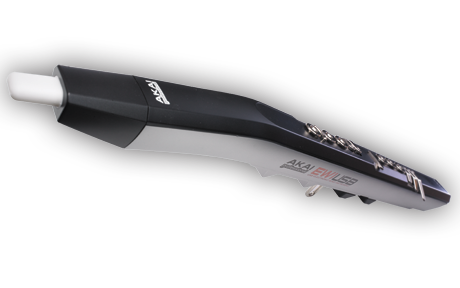Electronic Wind Instruments
- Jeremy Spurgeon

- Sep 19, 2022
- 3 min read
Electronic wind instruments date back to the 1930s and with the help of analog synthesizers and the development of MIDI they are hiding in plain sight on some of your favorite records.
Although the first electroacoustic clarinet was developed by Benjamin F. Miessner in the 1930s, it is not surprising that the first commercially produced wind synthesizer was the Hohner Electra-Melodica in 1967. However, the first wind synthesizer to be widely used commercially was the Lyricon manufactured by Computone Inc., in 1974. It featured a switch to allow the player to change the fundamental and play parts written for saxophone, trumpet, clarinet, flute, etc., and an octave switch for low, medium, and high. Its sound synthesis was based on additive synthesis and also had controls for glissando, portamento, and timbre attack. It used a bass clarinet mouthpiece and a spring-loaded sensor for detecting lip pressure and an interesting diaphragm for wind pressure which controlled the amount of light from an LED that shone on a photocell for dynamic control. The Lyricon was first used by Tom Scott of the jazz fusion group L.A. Express, and later by many others, including Ian Anderson, Kenny G, and Steve Jolliffe.
Computone went out of business in 1980, but its design of the Lyricon was used as the basis for Yamaha's WX series of MIDI wind controllers. The WX series are MIDI controllers and are designed to be used with a separate tone generator. Yamaha designed some specific tone generators to be used with their WX series controllers, but any device that accepts MIDI data can be used. The first instrument in the series was the WX7, introduced in 1987, the WX11 followed in 1993, and finally, the WX5 was released in 1999. The WX5 has a 16-key layout like a standard saxophone. It features a built-in MIDI output and a dedicated cable for connecting to Yamaha's WX-Series tone generators. The WX5 also has a high-resolution wind sensor and a pitch bend wheel that can be controlled with your thumb.
The EWI, invented by Nyle Steiner, is an electronic wind instrument with a unique fingering system that is closer to the woodwind style. While early models consisted of a wind controller and a separate digitally controlled synthesizer, the current models contain a sample-based digital synth built into the instrument. The Akai company took over the instruments from Steiner and now they produce the EWI5000 and EWI SOLO. Each contains a built-in synth. Akai also offered the EWI USB, which was designed without any built-in sounds for use with computer software.
There is a brand-new electronic wind instrument that is being produced by the Chinese company Robkoo. The R1 features built-in motion control that lets you create pitch bend and vibrato by tilting the instrument. The mouthpiece is interchangeable and allows for playing the instrument horizontally like a flute. It features touch-sensitive keys, a built-in rechargeable battery, an OLED screen, and a companion app that allows you to tweak settings, save patches, and set up custom fingerings. It also features wireless connectivity.
Electronic wind instruments have come a long way since their inception. Now with the latest advancements in battery power and wireless MIDI, these devices are giving musicians the mobility and flexibility they have been longing for. Many artists have embraced these instruments and are pushing the limits of what is possible still today. The next time you hear an amazing lead line, don't be surprised if it turns out to be played on an electronic wind instrument.


















Comments